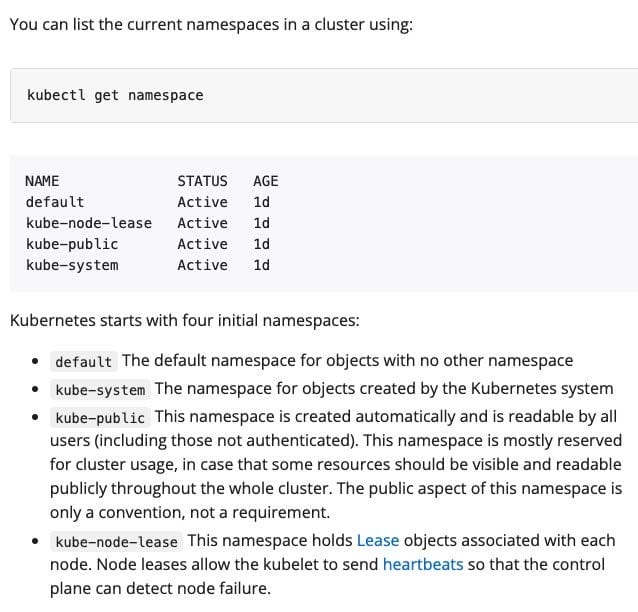Exam Details
Exam Code
:KCNAExam Name
:Linux Foundation Certified Kubernetes and Cloud Native Associate (KCNA)Certification
:Linux Foundation CertificationsVendor
:Linux FoundationTotal Questions
:126 Q&AsLast Updated
:Jul 23, 2025
Linux Foundation Linux Foundation Certifications KCNA Questions & Answers
-
Question 21:
How to get the logs of the previously terminated nginx container from the web pod?
A. kubectl logs -p -c nginx web
B. kubectl logs nginx
C. kubectl logs -p -c web nginx
D. kubectl logs -f -c nginx web
-
Question 22:
Which of the following are not the metrics for Site Reliability Engineering?
A. Service Level Objectives 'SLO'
B. Service Level Agreements 'SLA'
C. Service Level Indicators 'SLI'
D. Service Level Definition 'SLD'
-
Question 23:
Which of the following is an advantage a cloud-native microservices application has over monolithic applications?
A. Cloud-native microservices applications tend to be faster and more responsive than monolithic applications.
B. Cloud-native microservice applications tend to be easier to troubleshoot.
C. Cloud-native microservice applications tend to be easier to scale and perform updates on.
-
Question 24:
What are default kubernetes namespaces?
A. default, kube-public, kube-system, kube-node-lease
B. kube-default, kube-public, kube-system, kube-node-lease
C. default, kube-public, kube-systems, kube-node-lease
D. default, kube-public, kube-system, kube-node-leases
-
Question 25:
What is the name for the tool that manages communication between pods, injects a sidecar proxy container into each pod and directs network traffic through the proxy container?
A. namespace
B. Deployment
C. Network policy
D. Service mesh
E. Service
-
Question 26:
A new Pod is created. Then, the Pod is assigned to a Node. Which Kubernetes component was responsible for determining which Node to assign the Pod to?
A. kubelet
B. Scheduler
C. API Server
D. Controller manager
-
Question 27:
Which of the following is used to request storage in Kubernetes?
A. PersistentVolume 'PV'
B. PersistentVolumeClaim 'PVC'
C. Container Storage Interface 'CSI'
D. StorageClasses
-
Question 28:
Which of the following is not the Kubernetes AutoScaling Strategy?
A. Horizontal Pod Autoscaler
B. Cluster Autoscaler
C. Vertical Pod Autoscaler
D. Load Balancing AutoScaler
-
Question 29:
What is the command to list all the available objects in your Kubernetes cluster?
A. kubectl get all
B. kubectl get api-resources
C. kubectl api-resources
D. kubectl get pods
-
Question 30:
What makes cloud native technology so important?
A. It makes data centric
B. It strengthens team
C. It removes roadblocks to innovation
D. It helps gather software requirements
E. It makes operational centric
Related Exams:
CKA
Linux Foundation Certified Kubernetes Administrator (CKA)CKAD
Linux Foundation Certified Kubernetes Application Developer (CKAD)CKS
Linux Foundation Certified Kubernetes Security Specialist (CKS)HFCP
Linux Foundation Certified Hyperledger Fabric Certified Practitioner (HFCP)KCNA
Linux Foundation Certified Kubernetes and Cloud Native Associate (KCNA)LFCA
Linux Foundation Certified IT Associate (LFCA)LFCS
Linux Foundation Certified System Administrator (LFCS)
Tips on How to Prepare for the Exams
Nowadays, the certification exams become more and more important and required by more and more enterprises when applying for a job. But how to prepare for the exam effectively? How to prepare for the exam in a short time with less efforts? How to get a ideal result and how to find the most reliable resources? Here on Vcedump.com, you will find all the answers. Vcedump.com provide not only Linux Foundation exam questions, answers and explanations but also complete assistance on your exam preparation and certification application. If you are confused on your KCNA exam preparations and Linux Foundation certification application, do not hesitate to visit our Vcedump.com to find your solutions here.





